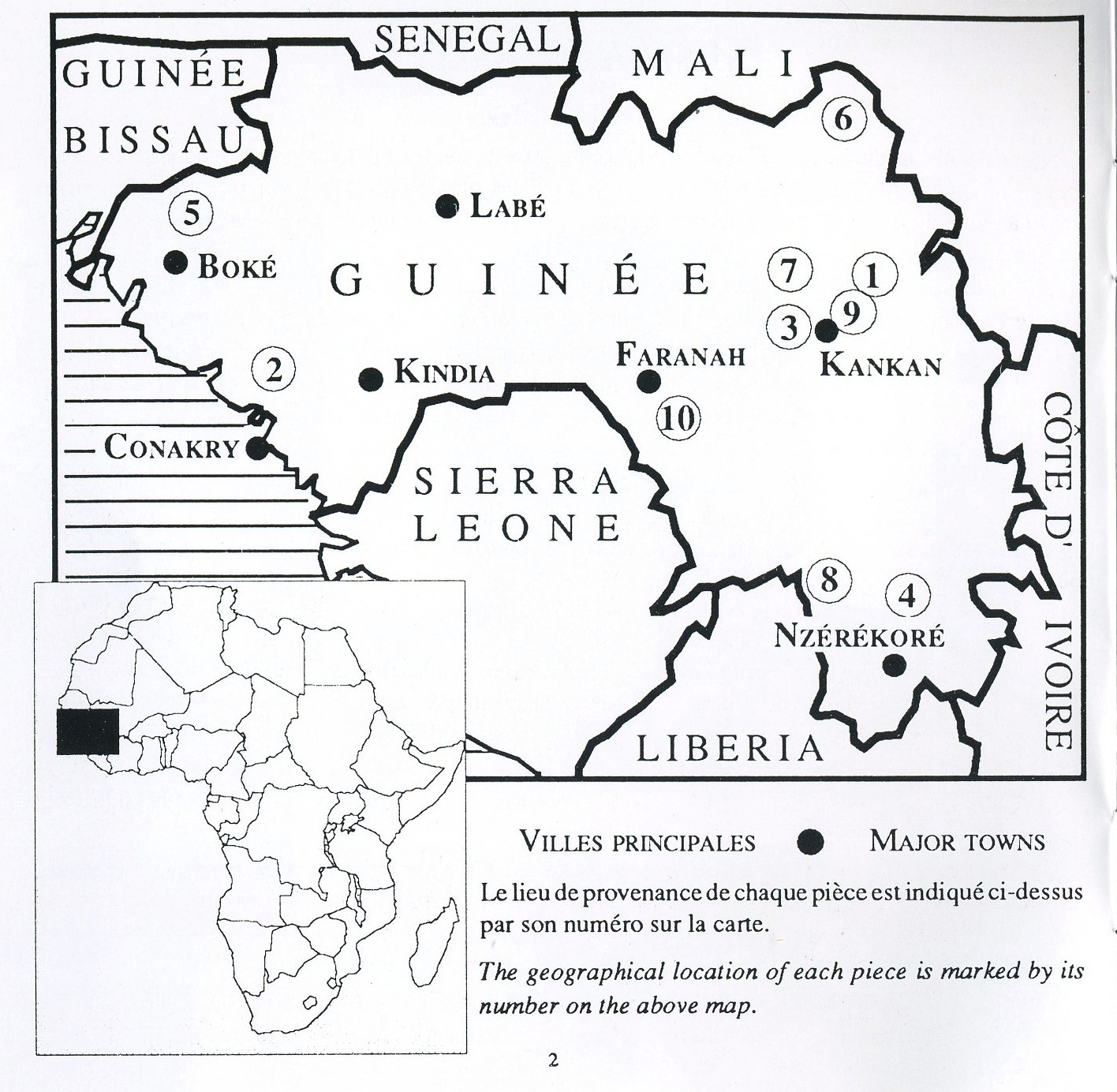makuru
Keita, Mamady. 1992. Nankama. Fonti Musicali, FMD 195.
(Yankadi Makru)

Régions: Fria, Coyah. Rythme: Susu (no. 2 on map.)
Rythme et danse de la séduction. Se danse et se joue pendant les fêtes populaires, les mariages, les baptêmes... et les rencontres entre les jeunes des villages. Rythme de réjouissance.
Tela fa n'ma dugui donkhè
E tela yanfa dununyama mayo tela awa yire
Tela dugui donkhe donfe mufan tela
E tela yanfa dununyama mayo tela awa yire
Tailleur, donne-moi le reste de mon tissu. Il n'est pas bon d'utiliser le reste du tissu des gens!
Diabate, Karamba. 1996? Journey Into Rhythm: The Rhythms & Music of Guinea West Africa. 2 vols. Third Ear Productions.
(Macuru)
Yancadi and macuru are the rhythms of the Susu people of the coastal region of Guinea. It is also a social event for young men and women to meet and dance together. Yancadi is usually played slow, alternating with macuru at double the tempo.*
* Transcription mine.
Bangoura, M'Bemba. 1999. Fandji.
(Makuru)
Ceremonial music of the people of Sierre [sic] Leone, West Africa.
Billmeier, Uschi. 1999. Mamady Keita: A Life For the Djembe—Traditional Rhythms of the Malinke. Engerda, Germany: Arun-Verlag.
(Yankadi — Makru)
Traditional Ethnic Group: Susu; Southwest Guinea
Yankadi and Makru together are a dance and rhythm for seduction.
The young people of neighboring villages invite one another to Yankadi festivities. Mostly, the young people between the ages of fifteen and twentyfive [sic] dance, but the adults also like to be part of it!
The dance begins slowly with the rhythm Yankadi; girls and boys face each other in to [sic] rows and slowly dance towards each other. One boy places a scarf on the chest of a young girl as a symbol of love.
Then, a whistle sounds, the signal for the change into the rhythm Makru, which is faster. The rows break up, and the couples dance individually. The man with the whistle directs the dance, which alternates between the slower and faster parts. A Makru break in the fast part signals the end.
The rhythm begins in a slow tempo with Yankadi, and following a signal, changes to Makru, approximately twice as fast. it is possible with a signal to go back to the slower tempo.
Keita, Mamady. 2004. Guinée: Les rythmes du Mandeng. Vol. 2. Fonti Musicali, FMU 0320.
(Makru)
Yankadi/Makru comes from the Susu people. It is a dance of seduction or courtship which begins with a slow rhythm. The boys and girls approach each other, observingly. Then when we change rhythms, and play Makru, that's the time when couples form and dance together, everyone dancing for their own enjoyment.*
* Transcription mine; of English-language DVD narration.
Diaby, Mohamed. 2007. Ala Na Na. Mohamed Diaby.
(Makuru)
A courtship dance between men and women from the Susu people of south Guinea.
Delbanco, Åge. 2012. West African Rhythms. Charleston, SC: Seven Hawk.
(Makuru / Makru)
Susu dance for young men and women played with the slower yankadi.